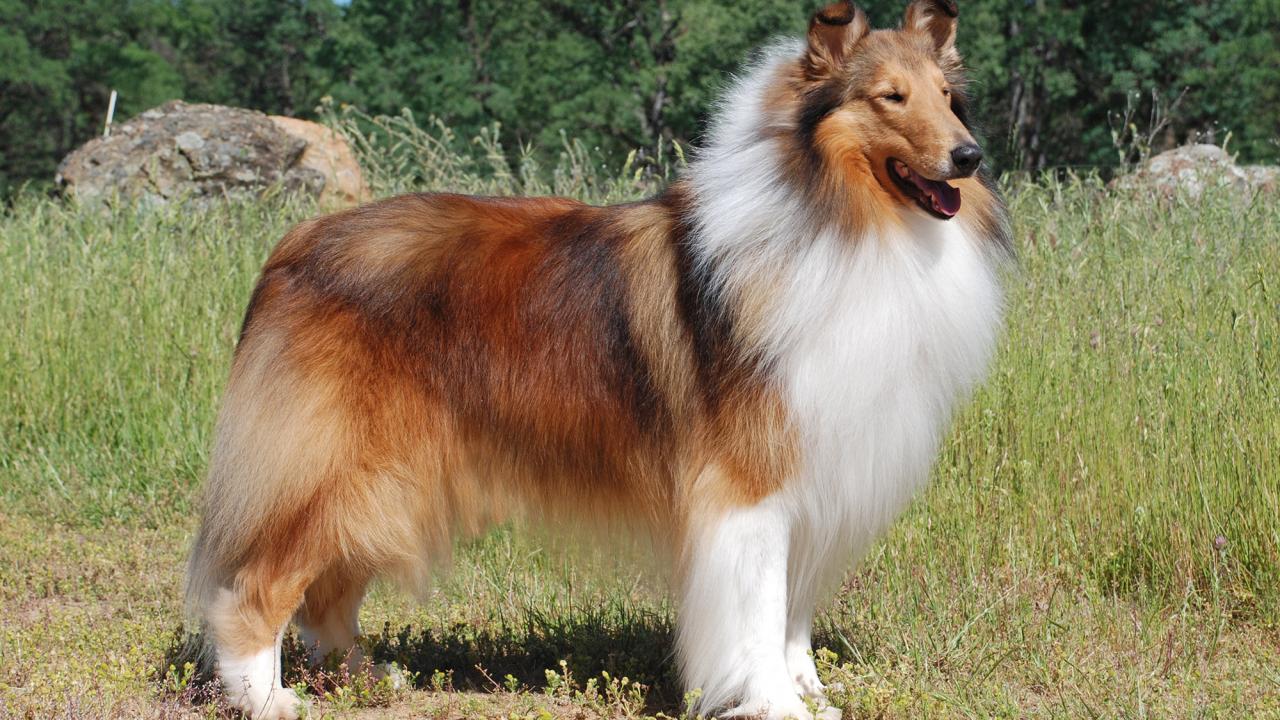Dogs come in all shapes and sizes, but variations in color patterns provide some of their most distinctive characteristics. A newly released study sheds light on a subset of these patterns, unexpectedly leading to new questions about long-held tenets of dog evolution.
The study, co-authored by Professor Danika Bannasch, the Maxine Adler Endowed Chair in Genetics at the University of California, Davis, School of Veterinary Medicine, was published Aug. 12 in Nature Evolution and Ecology. It reveals structural variants that control expression of the agouti signaling protein, or ASIP, gene at two separate locations to produce five distinctive dog color patterns. These different patterns are widespread, occurring in hundreds of dog breeds and hundreds of millions of dogs around the world.
The question of when these changes arose surprised the group of international researchers.
They discovered that the genetic combination for one of the coat patterns — dominant yellow, or DY — is shared with arctic white wolves and, based on phylogenetic analysis, originated from an extinct canid that diverged from gray wolves more than 2 million years ago.
“While we think about all this variation in coat color among dogs, some of it happened long before ‘dogs’ were dogs,” Bannasch said. “The genetics turn out to be a lot more interesting because they tell us something about canid evolution.”
The researchers hypothesize that lighter coat colors would have been advantageous to an extinct canid ancestor in an arctic environment during glaciation periods 1.5 to 2 million years ago. Natural selection would have caused that coat pattern to persist in the population that eventually gave rise to dogs and wolves.
“We were initially surprised to discover that white wolves and yellow dogs have an almost identical ASIP DNA configuration,” said Chris Kaelin of the HudsonAlpha Institute for Biotechnology in Huntsville, Alabama, who is co-first author of the work with Bannasch. “But we were even more surprised when it turned out that a specific DNA configuration is more than 2 million years old, prior to the emergence of modern wolves as a species.”
Bannasch conducted the research during a sabbatical in Professor Tosso Leeb’s lab at the University of Bern in Switzerland. Her work at UC Davis focuses on identifying molecular causes for inherited diseases in dogs and horses. During one of Leeb’s lab meetings she became interested in figuring out the basis for black and tan coat colors in dogs.
Bannasch expanded her collaboration to include colleagues at the HudsonAlpha Institute who could contribute their expertise in phylogenetics and mammalian coat patterning.
Two mutations lead to five phenotypes
Wolves and dogs can make two different types of pigments, a black one called eumelanin and a yellow pigment, pheomelanin. The precisely regulated production of these two pigments at the right time and at the right place on the body gives rise to very different coat color patterns. Pheomelanin (yellow) production is controlled by the agouti signaling protein, which is produced by the ASIP gene.
The researchers realized that no single genetic mutation accounted for the five major color phenotypes. Dogs need mutations in two areas of the ASIP gene to get different coat patterns. Bannasch and colleagues renamed the phenotypes to better describe the variations: dominant yellow, shaded yellow, agouti, black saddle and black back. They also discovered that the haplotype for dominant yellow was much older than anticipated.
“It didn’t come from modern wolves. It had been around for much longer,” Bannasch said.
So, the researchers tested the genetics of ancient wolves and dogs to confirm that the dominant yellow haplotype has been around for about 2 million years, long before the domestication of dogs some 30,000 years ago.
The black back pattern was identified in a dog sample that was 9,500 years old, showing that the rich variation in dog coat colors was present in the earliest canine companions.
In addition to her scientific research, Bannasch has a passion for raising and training dogs. Along with her Nova Scotia duck tolling retrievers, Bannasch has a black back patterned Danish Swedish farmdog. Soon after coming back to Davis, she brought home her second of that breed, which carries the dominant yellow pattern. Now all she needs are the three other coat patterns, she joked, and she’ll have a full set.
Media Resources
Read the paper (Nature Ecology and Evolution)
Media Contacts:
- Danika Bannasch, School of Veterinary Medicine, 530-754-8728, dlbannasch@ucdavis.edu
- Andy Fell, News and Media Relations, 530-304-8888, ahfell@ucdavis.edu
